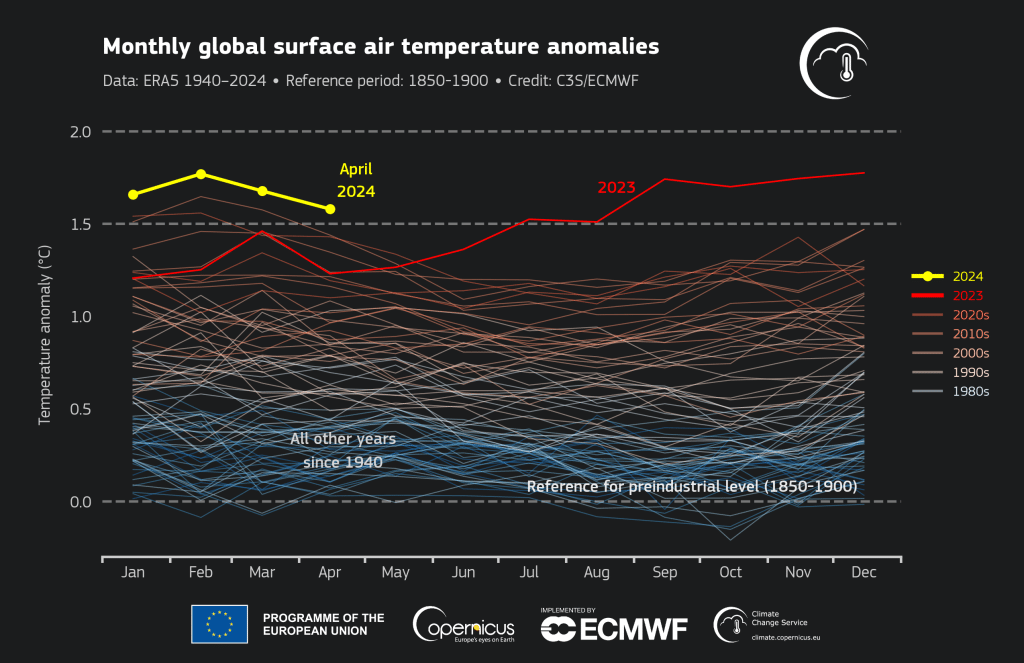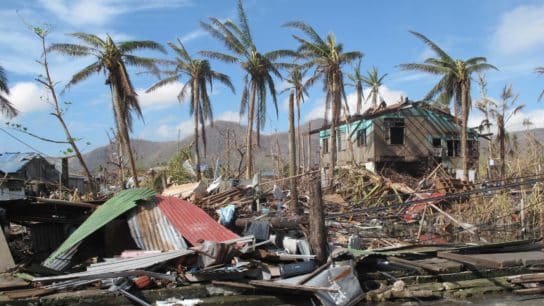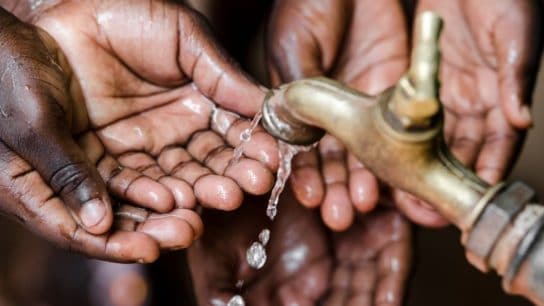The influence of the El Niño weather pattern and infrastructure failures were also identified as contributing factors to the deadly floods in Southern Brazil.
—
The devastating floods that affected Southern Brazil in April and May, killing 169 and displacing nearly 600,000 people, were made twice more likely to occur by human-caused climate change and amplified further by El Niño and infrastructure failures, a new study has revealed.
The deadly floods, triggered by heavy rain, affected 90% of the Rio Grande do Sul state, an area equivalent to the UK. While Brazil and neighbouring countries are no strangers to major rainfall, last month’s storms were significantly stronger than usual.
World Weather Attribution (WWA) conducted a rapid attribution study to understand the effect of human-caused warming on the floods. The analysis concerned an event that occurred between April 26 and May 5, which saw a succession of three rainfall events. The average accumulation of rain over this period was 420mm, equivalent to three normal months of rain.
By comparing historical weather data and climate models, researchers concluded that in today’s world –which is 1.2C warmer than pre-industrial times due to human activities such as the burning of fossil fuels – such event was made twice more likely and around 6-9% more intense.
According to the Intergovernmental Panel on Climate Change (IPCC), climate change is intensifying the water cycle, leading to more intense rainfall and associated flooding. As the world continues to warm, the likelihood, frequency, and intensity of such events are only expected to increase further.
The heightened rainfall were also partly attributed to the El Niño weather pattern, a phenomenon associated with the warming of waters in the eastern Pacific Ocean that occurs every two to seven years and that brought extreme weather and off the charts temperatures in 2023 and during the first half of 2024. The WWA analysis concluded that, compared to a phase without El Niño, the event was made 2-5 more likely and 3-10% more intense.

“This attribution study confirms that human activities have contributed to more intense and frequent extreme events, highlighting the country’s vulnerability to climate change. It is essential for decision-makers and society to recognize this new normal,” said Lincoln Alves, Researcher at the Brazilian National Institute for Space Research (INPE).
The city of Porto Alegre was completely cut off by the deadly floods. Following the floods, 1.3 million residents were left without power after energy companies cut off supplies for safety reasons, and an estimated 80% lacked access to drinking water, as five of the city’s six water treatment plants ceased working. Low-income communities and those living in informal settlements and indigenous villages were particularly affected.

Besides climate factors, the failure of Porto Alegre’s flood protection system owing to a lack of investments and maintenance also contributed to the extent of the damage. Put in place after floods in 1941, the flood protection network was supposed to protect the city from water levels of at least 6 metres above average. Instead, the system reportedly began to fail at 4.5 metres of flooding.
“What happened was that some of these floodgates failed, one of them broke, others were not sealed correctly and allowed water to enter, and the water pumps couldn’t cope with the flow,” Rodrigo Paiva, Researcher at the Institute of Hydraulic Research, told The Brazilian Report. He argued that with an effective system of dykes in place, Porto Alegre “would still be dry.”
Deforestation and rapid urbanization were also blamed. Indeed, land use changes degrade soils or eliminate natural protection altogether, contributing to widespread flooding. According to the study, although Brazil has environmental protection laws in place to safeguard waterways from construction and restrict land use changes, their application and enforcement are inconsistent, raising the vulnerability of both people and infrastructure to the risks associated with flooding.

“The scary thing about these floods is that they show us that the world needs to be prepared for events so extreme, they are unlike anything we’ve seen before. Climate change is making once rare events much more frequent,” said Maja Vahlberg, Climate Risk Consultant at Red Cross Red Crescent Climate Centre.
“Implementing policies that make people less vulnerable, increasing protection against floods and restoring natural ecosystems to buffer the impact of heavy rains are some ways by which governments can avoid human deaths and limit the damage from these events.”
Featured image: Lula Oficial/Flickr.
You might also like: Human-Caused Climate Change Added 26 Days of Extreme Heat in Past 12 Months: Report
This story is funded by readers like you
Our non-profit newsroom provides climate coverage free of charge and advertising. Your one-off or monthly donations play a crucial role in supporting our operations, expanding our reach, and maintaining our editorial independence.
About EO | Mission Statement | Impact & Reach | Write for us














